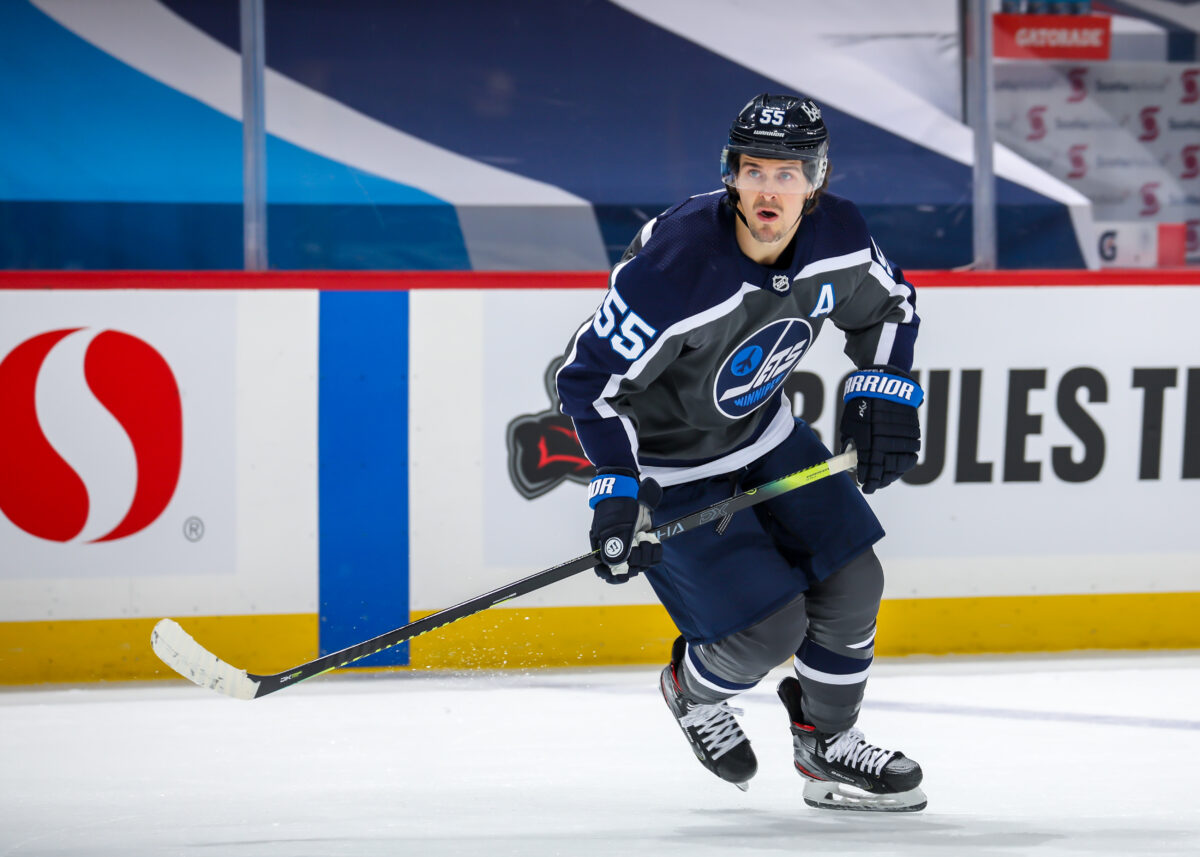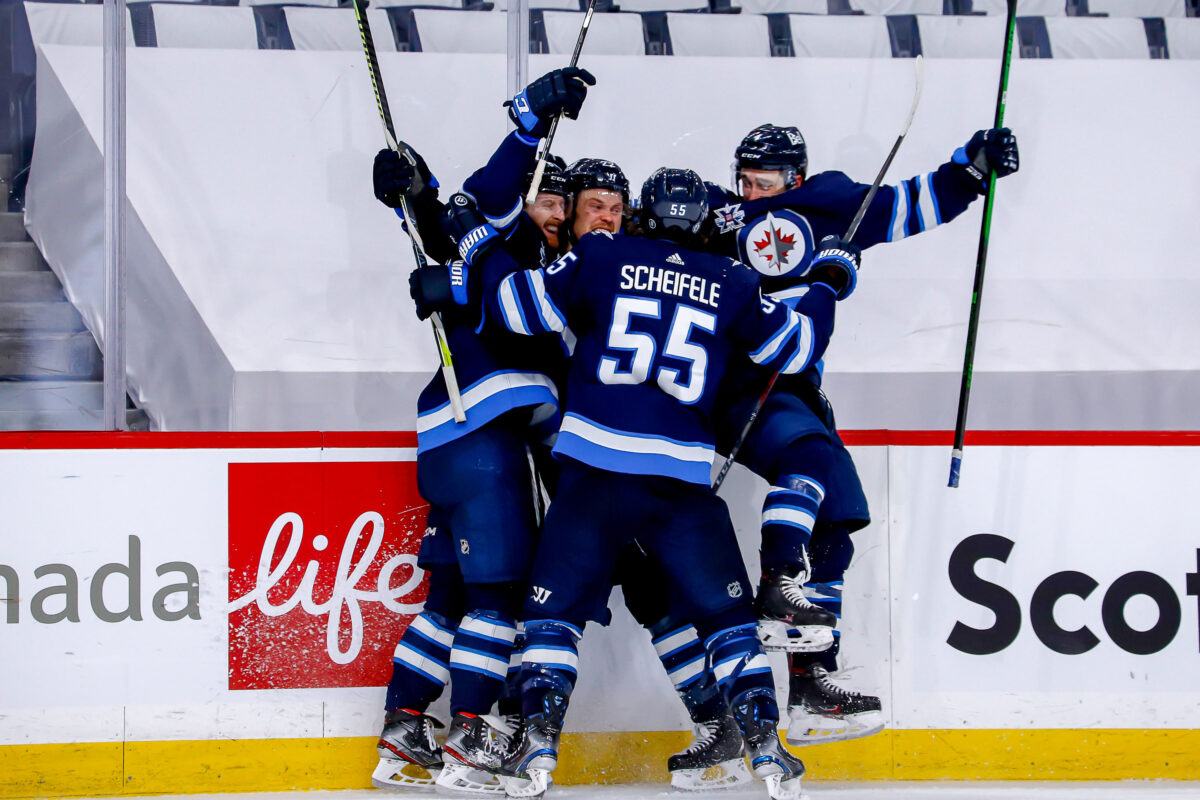The NHL’s Department of Player Safety came down hard on Winnipeg Jets superstar Mark Scheifele, handing the 28-year-old a four-game suspension for a vicious charge against Montreal Canadiens forward Jake Evans in Game 1 of their second-round series. The suspension sparked plenty of discussions; some considered the punishment far too severe, while others argued it wasn’t enough.
Any way you look at it, the suspension sent a clear message to the NHL and established a new precedent for charging penalties and reckless actions. Scheifele had never been suspended by the NHL before the Game 1 incident, and the punishment comes as a surprise to many and at the worst possible time after the Jets dropped the opening game of the series.
To make matters worse, Winnipeg has already experienced life in the postseason without Scheifele, and we only have to travel back roughly 10 months to understand the impact it made. Scheifele played six minutes in the Jets’ qualifying-round series against the Calgary Flames in the 2020 Playoffs, but after an awkward hit from Matthew Tkachuk, he missed the rest of Game 1 and the series. We all know what happened to the Jets after his departure.
Winnipeg struggled mightily in Scheifele’s absence, and despite having a more complete roster and better depth this season, they now face the same challenge. While this series-altering decision could see Scheifele return if the Jets force a Game 6, the chances of that happening are slim.
Scheifele’s Numbers Speak for Themselves
Scheifele’s absence will be felt throughout the organization, and his numbers alone are enough to explain why. He posted a remarkable 63 points in the 56-game regular season, good enough for ninth in the league. Moreover, he led the Jets in points and assists (42) and was tied with Nikolaj Ehlers for second in goals (21).
That level of production simply cannot be replaced internally. Scheifele continues to be an integral part of the Jets’ offense and has been a superstar in the making over the past few seasons. In a regular 82-game season, he would have been on pace to match some of his highest career totals. Asking whoever steps into the lineup to make an immediate and meaningful impact similar to Scheifele’s is unreasonable.

Scheifele’s advanced metrics heighten the narrative that the former 7th-overall pick has become one of the league’s most dynamic forwards. Finishing the 2020-21 campaign with a Corsi for percentage at 56.2%, the Jets consistently outplay their opponent when he is on the ice, both in shots and puck possession.
Furthermore, Scheifele has developed his two-way ability without sacrificing his offensive production. With some favourable zone start percentages during the regular season, Scheifele took faceoffs in the offensive zone 67.2% (oZS) of the time compared to a limited 32.8% (dZS) in his own end. Yes, those numbers have evened out through the first five playoff games (52.7 oZS% compared to a 47.3 dZS%), demonstrating his improved 200-foot game and his ability to produce regardless of the situation.
Scheifele’s numbers significantly impact the success of the Jets, as they have done for the past five seasons and counting. Regarded as one of the most consistent players in the NHL, Winnipeg’s roster faces a tall order in replacing his production.
The Struggle to Replace Scheifele’s Leadership and on-Ice Impact
Numbers aside, the Jets face another challenge when they attempt to replace Scheifele’s intangibles. After being named an alternate captain before the 2016-17 season (alongside captain Blake Wheeler and former alternate Dustin Byfuglien), Scheifele has continued to be a key member of the team’s leadership group, which coaches rely on heavily in the playoffs.
His versatility will also be missed in his four-game absence from the lineup. The former Barrie Colt has moulded his game to fit the Jets’ needs; he quarterbacks the power play and can shift to the wing if needed. Scheifele’s ability to play a variety of roles while logging over 20 minutes of ice time a night is a testament to the role he plays outside of his offensive consistency.

Speaking of the Jets’ power play, Winnipeg’s special teams’ strategy revolves around Scheifele. I’ve touched on this before, but since Patrik Laine’s departure to the Columbus Blue Jackets this season, Scheifele has been the main reason that the Jets’ power play has remained among the league’s best.
Latest Jets Content:
- 3 Winnipeg Jets Who Could Earn a Roster Spot in 2024-25
- 3 Jets Who Will Be Under the Microscope in 2024-25
- Best & Worst Trades in Winnipeg Jets’ History
- Manitoba Moose Gain Flexibility with Jets’ Signings
- Top Contenders for 2025 Calder Trophy
In short, the puck flows through Scheifele. His position at the left point is usually the focal point to generate puck movement, whether it’s a cross-seam pass to Kyle Connor, a dish down low to Blake Wheeler, or a shot directed towards the net. His ability to read the play and thread passes through open lanes is the driving force behind Winnipeg’s top power-play unit, and it’s not unreasonable to think that the Jets’ special teams will take a massive hit in Scheifele’s absence.
What’s Next for the Scheifele-Less Jets?
What’s next? A challenge. The Jets will now be without Scheifele for most of their second-round series and, as it seems now, likely the rest of the season. His numbers alone are enough cause for concern, but the intangibles that he brings to the table compound the impact of his absence.
For the second straight playoffs, the Jets will have to get creative to fill Scheifele’s void in the lineup, and while not impossible, beating any team without your number one centre isn’t cause for optimism. Yes, the Jets are a deeper team than they were last season, and this series against the Canadiens could go to Game 6, but as it stands, playing without Scheifele for four straight games could be too much to overcome.
How do the Jets work around Scheifele’s suspension? Who needs to step up in his absence? Let me know in the comments.